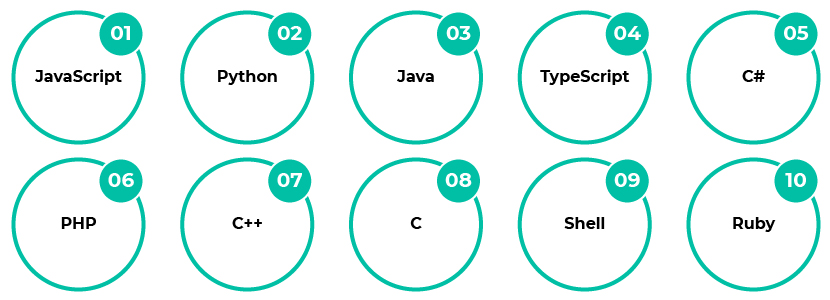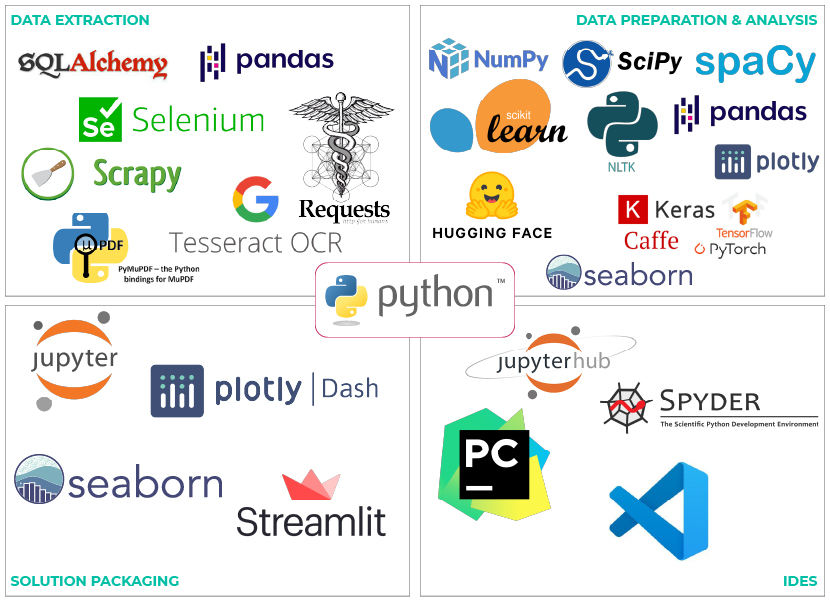Published on June 29, 2021 by Sreeram Ramesh
Introduction
During the golden age of economic expansion in the 1950s, many fields of science and engineering witnessed rapid growth. In particular, two fields of mathematical and physical sciences –mathematical programming and Monte Carlo methods – witnessed exponential growth in both theory and practical applications. Along with the academic progress in natural sciences, a new field of science and technology – computer science – began to emerge. Since then, the platforms and tools used to analyse data have undergone a number of changes.
Today, Python has emerged as one of the most popular programming languages, fuelled by its open-source nature and a rich history of contributors from the fields of scientific computing, mathematics and engineering. Due to its clear and intuitive syntax, Python is perhaps the most user-friendly language compared with traditional languages such as Java and C++.

For young data scientists and data science aspirants, here is our quick guide that covers the libraries, functions, models and integrated development environments (IDEs) most frequently used in Python.
Data science solutions typically have four elements:

1. Data extraction
Data sources used most often in the finance domain and Python libraries and functions used to extract data from them include the following:
Databases
sqlalchemy: to connect to relational databases and extract data
pymongo: to perform MongoDB extraction. MongoDB is an NoSQL DB
Flat files
pandas: to import, export, and transform data from files, including .csv, .xlsx and json files
open(), read(), write(), close(): : to execute create, read, update, delete (CRUD) actions
Web scraping
Requests: to make HTTP requests such as GET and POST
BeautifulSoup: to web scrape data from most web pages
Selenium: to collect data from complex web pages
Scrapy: to acquire data in a scalable manner
PDF reports
Traditional libraries: PyPDF2, pdfminer, tika, PyMuPDF and fitz
OCR libraries: textract and pytesseract
2. Data preparation and analysis
Data preparation and analysis methods depend on the type of data:
Structured data: Tabular data
Unstructured data: Text, audio and images
Data preparation
pandas: to perform data transformations, aggregations, validations and cleansing
numpy: to carry out fast numerical dataset operations
nltk: to perform a wider range of NLP pre-processing functionality
Data analysis
SciPy: to perform different mathematical computations
scikit-learn: the most commonly used library for predictive analytics
nltk: to perform NLP analysis, including sentiment scoring
spacy: to classify entity names through entity recognition modelling
textblob and vaderSentiment: to perform sentiment analysis on textual data
keras: to build and transform deep-learning networks and datasets
pytorch: to build advanced and flexible deep-learning models
tensorflow: another advanced framework to build deep-learning models
word2vec, glove, BERT and USE: pre-trained embedded language models to build advanced NLP
huggingface: open source repository of many different kinds of NLP pre-trained models
matplotlib, seaborn, and plotly: to visualise data through graphs
3. Solution packaging
jupyter notebook: to rapidly code, visualise and present data applications and reports
powerbiclient: to visualise data insights and predictions
dash: to build graphical and user interface web page components
4. IDE
PyCharm, Visual Studio Code, jupyterlab and Spyder are the IDEs most commonly used by Python users. These IDEs come with a feature to easily perform version-control operations.
Conclusion
Open-source programmers around the world are constantly improvising Python and open-source libraries and tools, making the language really powerful, easy to use and agile. With leading financial institutions and corporations embracing hybrid cloud strategies to manage work-flow during the pandemic and beyond, Python has become an integral catalyst for transforming global businesses.
Bibliography
Tags:
What's your view?
About the Author
Sreeram Ramesh has over six years of experience in solving business problems using machine learning (ML), deep learning and statistical techniques. He has worked with multiple financial service providers and Fortune 500 companies, providing robust data science solutions. At Acuity Knowledge Partners, Sreeram creates artificial intelligence (AI)/ML engines to analyse textual data, and generate insights and proprietary scores. He holds a Bachelor of Engineering degree in Mechanical Engineering from Birla Institute of Technology and Science (BITS), Pilani.
Comments
12-Jul-2021 06:04:17 am
Like the way we think?
Next time we post something new, we'll send it to your inbox








